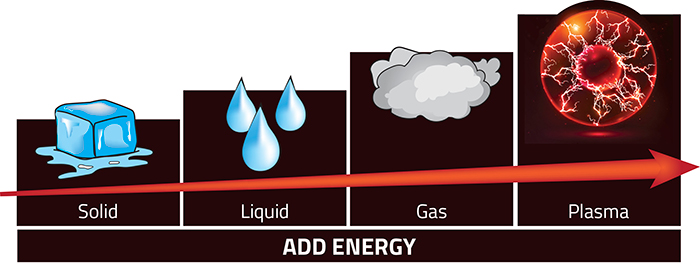What is Plasma?
When defining the various forms of matter, it is common to group them into distinct states such as: solid, liquid, or gas. However, there is another fundamental state of matter, called plasma, which can occur under certain conditions.
All matter is made from atoms, which are essentially the building blocks of everyday objects. Atoms are composed of protons (positively charged), electrons (negatively charged) and neutrons (not charged). Atoms combine to form molecules.
A typical gas atom contains an equal number of both positive and negative charges. Therefore, the positive charges in the nucleus are surrounded by an equal number of negatively charged electrons, and so each atom is electrically neutral. Plasma is formed when the addition of heat (or other energy) causes a number of atoms to release some or all of their electrons. The remaining parts of those atoms are left with a positive charge, and the detached negative electrons are free to move about. Those atoms and the resulting electrically charged gas are said to be "ionized." When enough atoms are ionized to significantly affect the electrical characteristics of the gas, it becomes plasma. Plasma responds to and generates electro-magnetic forces.
Let’s look at the molecule H2O, for example. It is comprised of two hydrogen atoms and one oxygen atom. The figure above depicts the four states of matter for H2O; ice is its solid form, water is its liquid form, and steam is its gas form. When heat energy is applied to the ice it simply changes state from a solid to a liquid, and when additional heat energy is applied the liquid changes state to a gas. Through the continued addition of heat energy to the steam, the subsequent gas molecules become electrically charged (ionized), which creates plasma. The term "PLASMA" was first applied to ionized gas in 1929 by Dr. Irving Langmuir, an American chemist and physicist.
Certain types of plasma occur in nature, such as the sun and other stars, static electricity, and lightning. There are other types of plasma, man-made ones, which are common in our daily lives, such as neon lights, fluorescent bulbs, and plasma televisions.

